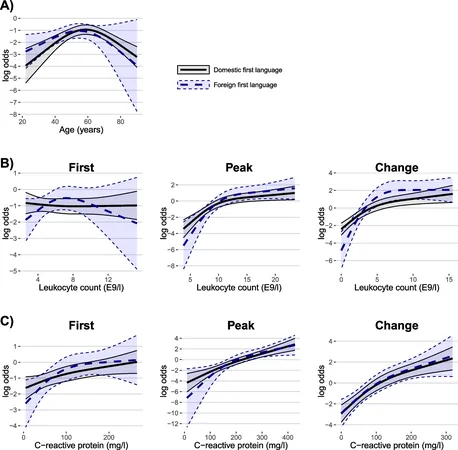
Unpacking COVID-19's Impact on Language Minorities in Finland: A Comprehensive Study
2025-05-29
Author: Mei
Understanding COVID-19 Among Finland's Language Minorities
The COVID-19 pandemic has disproportionately affected migrants and ethnic minority groups worldwide, and Finland is no exception. This study seeks to investigate whether patients with a foreign first language experience more severe COVID-19 symptoms when hospitalized compared to those who primarily speak Finnish.
Research Methods and Scope
A thorough retrospective observational study was conducted in Finland’s capital province from late February to early August 2020. It included all patients admitted to specialized healthcare with confirmed COVID-19. Researchers closely examined critical lab parameters such as creatinine, leukocyte count, and C-reactive protein (CRP) to assess disease severity across different language groups.
Key Findings: Who Was Affected?
Out of 614 patients, 131 patients (21.3%) had a foreign first language. Interestingly, those in this group were significantly younger, with a median age of 49, compared to 62 for domestic speakers. However, laboratory results indicated that despite initial differences, once adjusted for age and sex, the severity of illness didn’t significantly differ based on language.
The Role of CRP and Leukocyte Counts
CRP and leukocyte counts emerged as strong indicators of severe COVID-19 illness and ICU admissions. While foreign language speakers were overrepresented in hospitalizations, they did not show different laboratory results that would indicate worse health outcomes. The findings suggested that age appears to be a more defining factor in disease severity.
Broader Context: Trends in Ethnic Minorities
Consistent trends from studies across Europe and North America indicate higher COVID-19 infection rates among ethnic minorities. Explanatory factors include increased workplace exposure and larger household sizes in these communities. However, in terms of hospital stay outcome discrepancies, especially concerning ICU admissions and mortality, the evidence has been inconsistent.
Clinical Implications and Future Insights
This research underscores how language-related disparities in healthcare may not further exacerbate disease severity among hospitalized patients. Instead, it highlights the protective factor of younger ages among foreign language speakers, coupled with potentially better health outcomes.
Strengths and Limitations of the Study
Utilizing high-quality register data adds robustness to findings, although self-reported language as an ethnic indicator presents limitations. The complexity of biological responses tied to ethnicity further complicates the outcomes. Overall, the non-linear statistical analyses provided a clearer picture of emerging trends across different language groups.
Conclusion: A Nuanced Perspective on COVID-19 Severity
In conclusion, while language minorities faced heightened risks of hospitalization during the early pandemic, the severity of their COVID-19 cases did not significantly differ from that of Finnish speakers. This valuable insight advocates for healthcare policies that consider demographic nuances, particularly as we navigate potential future waves of infections.


 Brasil (PT)
Brasil (PT)
 Canada (EN)
Canada (EN)
 Chile (ES)
Chile (ES)
 Česko (CS)
Česko (CS)
 대한민국 (KO)
대한민국 (KO)
 España (ES)
España (ES)
 France (FR)
France (FR)
 Hong Kong (EN)
Hong Kong (EN)
 Italia (IT)
Italia (IT)
 日本 (JA)
日本 (JA)
 Magyarország (HU)
Magyarország (HU)
 Norge (NO)
Norge (NO)
 Polska (PL)
Polska (PL)
 Schweiz (DE)
Schweiz (DE)
 Singapore (EN)
Singapore (EN)
 Sverige (SV)
Sverige (SV)
 Suomi (FI)
Suomi (FI)
 Türkiye (TR)
Türkiye (TR)
 الإمارات العربية المتحدة (AR)
الإمارات العربية المتحدة (AR)